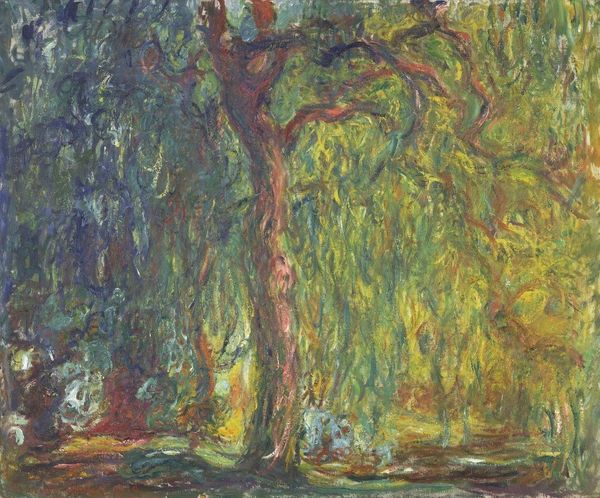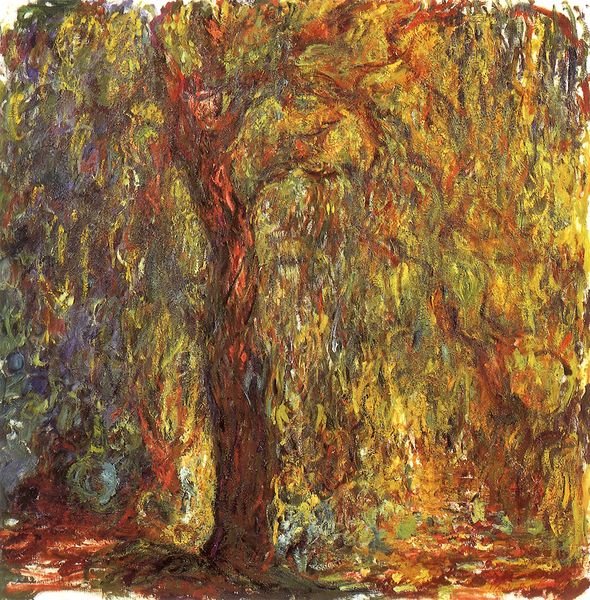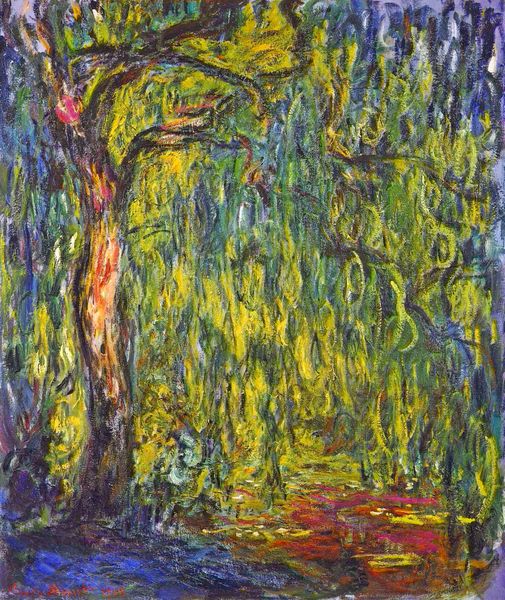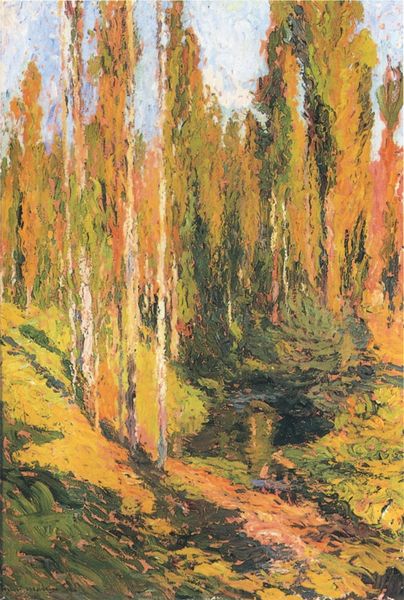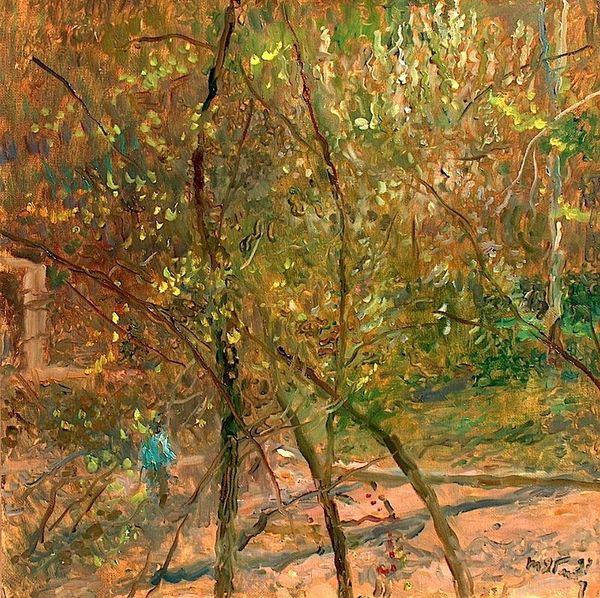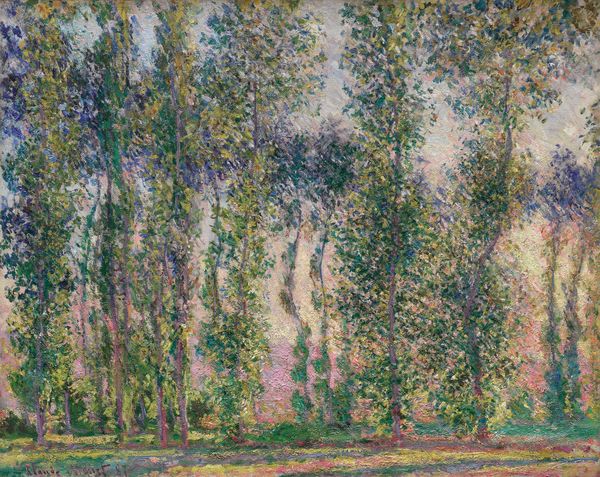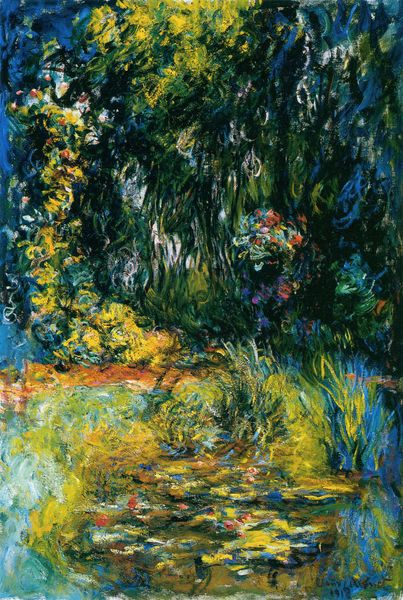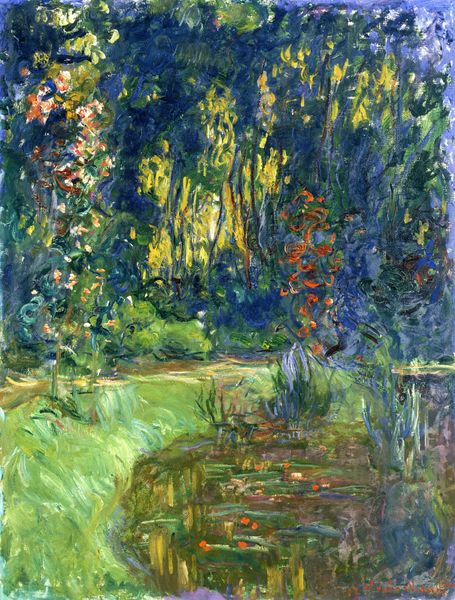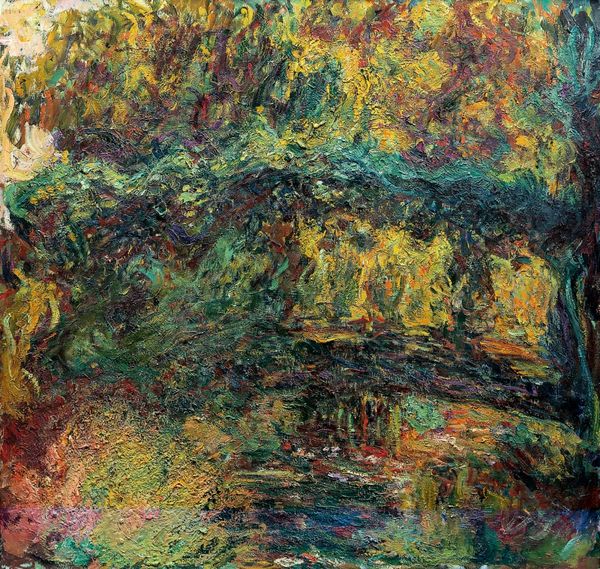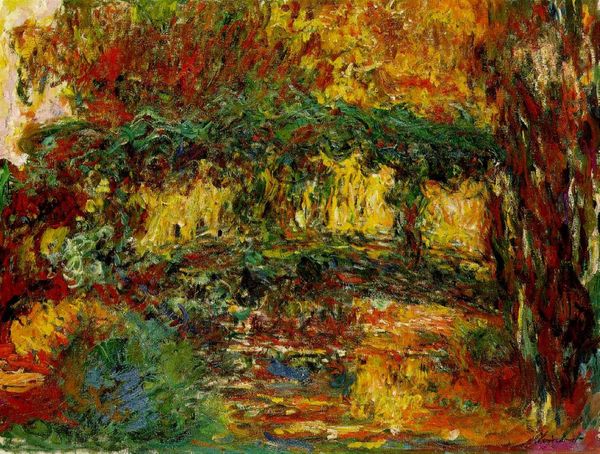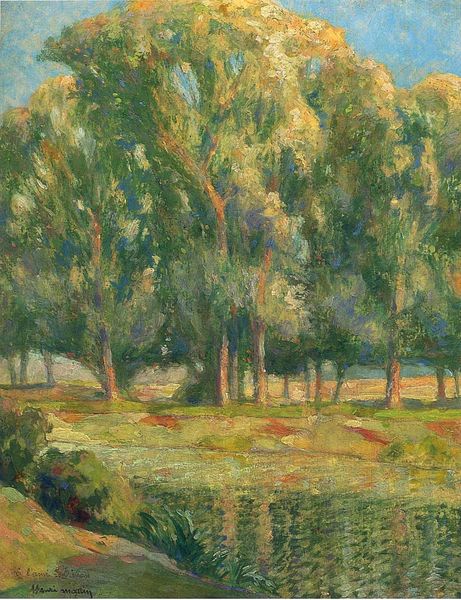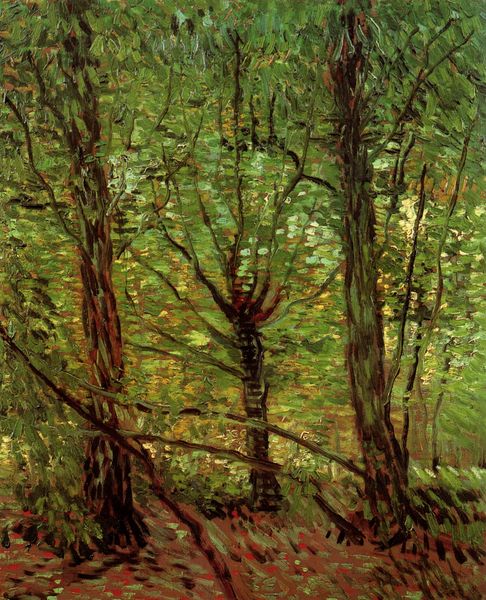
Copyright: Public domain
Editor: This is Claude Monet’s *Weeping Willow*, painted in 1919 using oil paint. It’s dominated by greens and feels overwhelmingly lush, yet somehow somber at the same time. How do you interpret this work? Curator: Well, viewing *Weeping Willow* through a historical lens, it’s impossible to ignore its creation in the immediate aftermath of World War I. Monet began this series in 1918, as the war raged on. Knowing that context, the willow, traditionally a symbol of mourning, speaks volumes about the collective grief pervading French society. Editor: That's a really insightful point. I was focusing solely on the aesthetic aspects. Does that wartime context influence how the work was initially received? Curator: Absolutely. Monet, already an established figure, intentionally linked these paintings to national sentiment, even offering two decorative panels to the French state as a war memorial. The state never accepted the donation, but these are inherently political paintings, tied to the experience of war and loss. Editor: So, it's not just a beautiful landscape; it’s also a monument, of sorts. The public perception shifts drastically when viewed that way. Curator: Precisely. Consider also the rise of nationalism at this time, which affected art production and consumption, shaping which images were considered ‘French’ and publicly valorized. Do you think Monet intended for the willow to be interpreted as solely French? Editor: Probably not solely, but I see your point. He was, maybe, offering a symbol of resilience and remembering, accessible across cultures. That adds so many layers to what seems, at first glance, like a tranquil scene. Curator: Exactly. Thinking about the sociopolitical impact is vital. What I initially saw as only beautiful brushstrokes becomes incredibly charged, reflecting the public mood and Monet's intentions during a tumultuous time.
Comments
No comments
Be the first to comment and join the conversation on the ultimate creative platform.
